The MGA With An Attitude
Rear DRUM BRAKE SEIZED - BT-105A
Your MGA has been parked for a while. You get it running, release the hand brake, try to drive off, and it doesn't move. A rear drum brake is seized. Now what? First check to see if the brake cable is taught on the rear axle. If so, give it a strong pull sideways in mid span to stretch it and pull the cable out of the jacket. If that does it, then you need to clean and lubricate the cable assembly, or replace it.
If the cable is slack, but the brake drum will still not turn, then try pushing in and wiggling the lever connected to the cable at the wheel. Put some muscle to it and wiggle vigorously. Wiggling the cylinder body may cause the piston to be pushed slightly back into the cylinder. If that does it, then you need to disassemble the slave cylinder for cleaning or replace it.
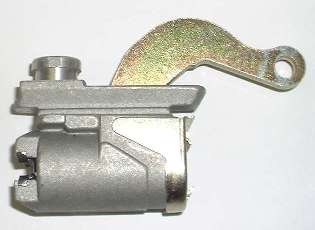
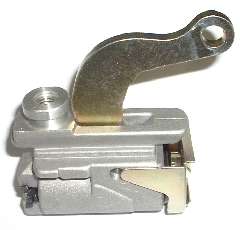
The lever in this slave cylinder is nested between two steel pistons, and all is in the aluminum housing. The outer piston has an O-ring to keep dirt and water out of the bore when it is retracted. When extended the piston can move out about 1/4 inch. This moves the O-ring beyond the end of the bore leaving the bore exposed to the environment. See O-ring above right. (Click for larger images).
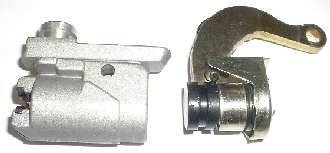
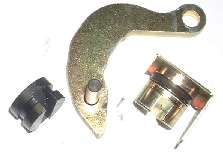
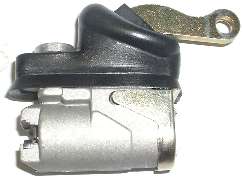
 Keeping the rear brake shoes properly adjusted near the drum will minimize travel of the outer piston, in which case the O-ring may remain inside the bore with a decent seal. Over time the rubber boot on the lever may deteriorate allowing dirt or water to enter the bore from the back side. With dirt and/or moisture inside the bore, the dissimilar metals of steel and aluminum may suffer from galvanic corrosion, or otherwise just get gummed up. This is when disassembly and cleaning may eliminate the sticking. If the bore is much corroded farther down, then the rubber hydraulic seal cup might lose the seal and leak. Honing and repacking may restore function, although it is somewhat difficult to hone a cylinder with a slot in the side. Emery paper wrapped on a wood dowel can make a good hone for this application.
Keeping the rear brake shoes properly adjusted near the drum will minimize travel of the outer piston, in which case the O-ring may remain inside the bore with a decent seal. Over time the rubber boot on the lever may deteriorate allowing dirt or water to enter the bore from the back side. With dirt and/or moisture inside the bore, the dissimilar metals of steel and aluminum may suffer from galvanic corrosion, or otherwise just get gummed up. This is when disassembly and cleaning may eliminate the sticking. If the bore is much corroded farther down, then the rubber hydraulic seal cup might lose the seal and leak. Honing and repacking may restore function, although it is somewhat difficult to hone a cylinder with a slot in the side. Emery paper wrapped on a wood dowel can make a good hone for this application.
The rear wheel cylinder slides in the back plate. When the brakes are applied, the cylinder pushes one way, and the piston pushes the other. The handbrake does the same thing, but does it by pushing only the outer part of the two piece piston. In either case, when the brake is released, the cylinder has to slide back to rest position, and so does the outer piston. It is essential to clean and lubricate both sides of the back plate AND the slot in the cylinder. A dirty and rusted back plate may cause the cylinder to hang up and not return rest.
Some brakes of this type have a spring shim welded to the back side of the back plate, to keep the cylinder from rattling. Dirt and rust can build up under this shim and cause binding. Since it is welded on, it is difficult to clean, but lots of penetrating oil and taps with a hammer, and probing with a thin shim followed by air blast, will usually rectify. Use anti-seize on the slot and rubber grease in the bore.
|